The RCA Studio II Lives On: A Package from Belgium
The RCA Studio II and its CDP1802 chipset had much more support from enthusiasts than it did the wider video game market. But I shouldn’t put “had” in the past tense; people are still keeping this beige box and its relatives alive, especially in Europe, where the Studio III color version of the chipset made its appearance in the form of the MPT-02 and related systems. And one of those enthusiasts, Philip Marien, saw my games post and reached out with a bag of goodies so I could take a look at the real power of this monochrome monster.
Video games deserve video
First off, the elephant in the room of the games post was that my captures were terrible, looking tolerable only if you compare them to the nightmares of the later Toshiba Visicom post. Clearly this is unacceptable– so the package includes a little composite mod. This one looks very similar to the one I attempted on my first, failed RCA Studio II, but it’s on a PCB and came with some nice instructions.
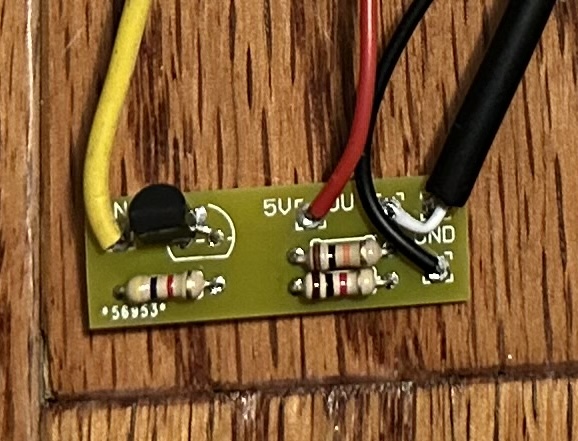
So I just followed the instructions, not too much there. One thing to note is that there is a convenient place to attach 5V near the controller input, which you might think is labeled on the PCB; but it’s not, those pads aren’t connected. However, the exact other side of the PCB at that point is a convenient place for 5V. Perhaps on a early version of this system there were vias here?
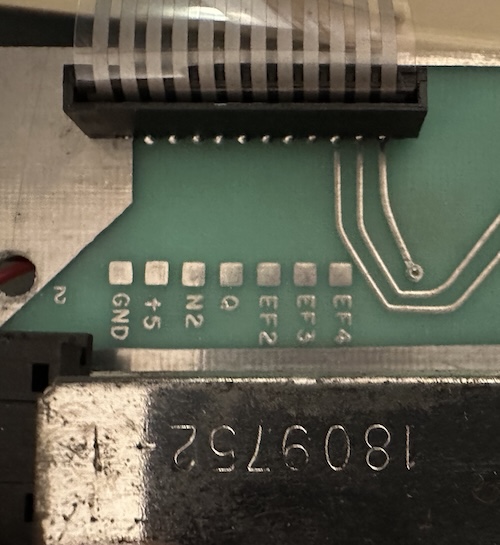
I left the old cord hooked up so I could still use the RF box to power it (and the on/off switch on the RF), but at this point it’s just a glorified power cord that needs too many adaptors to use a common 9V center-negative supply, so if it works I’ll probably just get rid of that and use a standard power input. My desk was already a mess anyway.
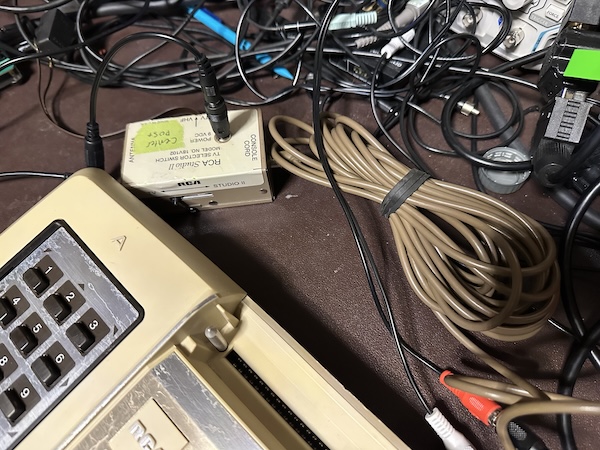
One thing of note is that with a monochrome console like this, if you have an upscaler without a composite input but that does have component, like the OSSC Pro, you can just put the RCA cable directly into the luma (green) input. After all, without color, this is just luma. And it looks great.
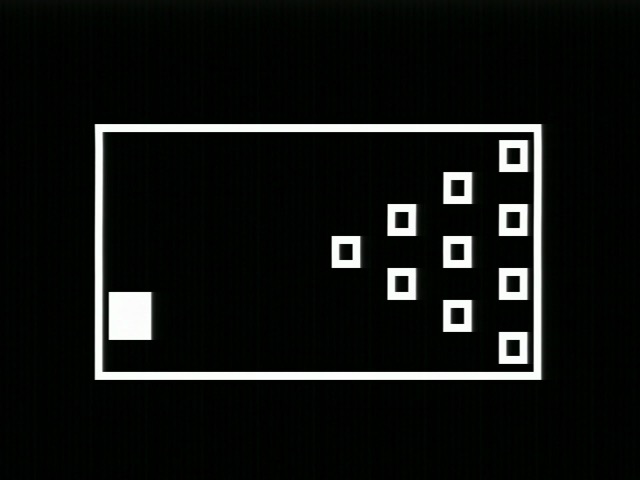
I might redo the original post with this; these are super crisp. All the audio is still coming from the console itself, of course, so captured video is silent.
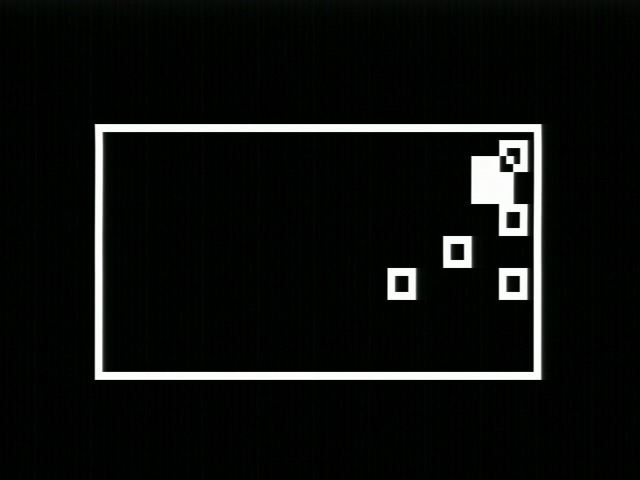
But let’s face it: this isn’t the reason this package is interesting. A video mod’s a video mod. What’s neat is the other thing in the package.
Multicart
Let’s let the suspense last long enough. The other thing in the package was a multicart for the RCA Studio II. This isn’t actually new– it’s been on the AtariAge Forums for years. But I don’t post on those boards (maybe I should), so it’s new to me. And since this is Nicole Express, that’s what matters.
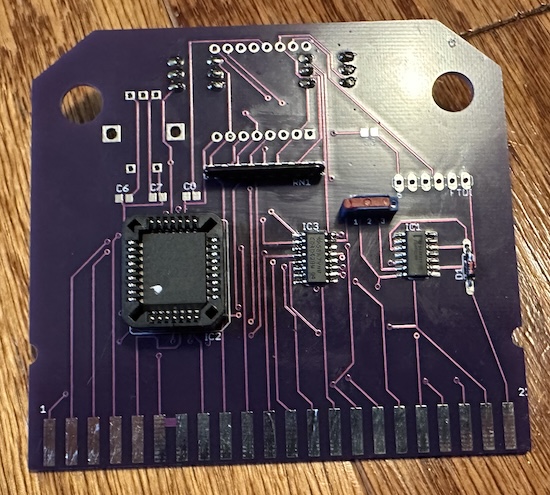
The rear shows off the card edge (remember, the console’s cartridge port is one-sided) and the socketed ROM. This is a multicart, but not an SD card or anything like that; it’s intended to be the end-all and be-all of RCA Studio II cartridges. It has another interesting feature on the front side.
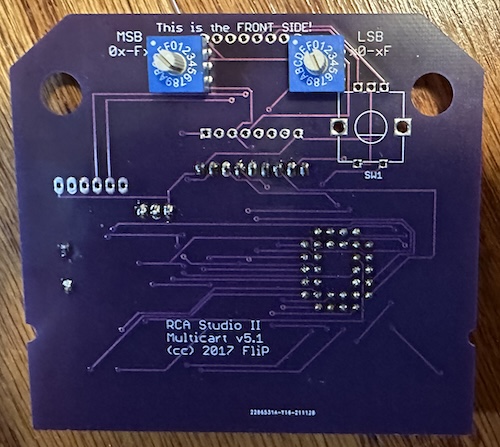
Rather than implement a menu system with the limited resolution, the console allows you to choose the game by means of two rotary switches, whose games are all listed in the manual and grouped logically. I found it easiest to use a plastic spudger with a narrow end to rotate the switches, personally.
Let’s start with Position 0x41, the test cart. This does something utterly shocking for the Studio II– it doesn’t boot up with a blank screen. Instead, it boots up with a single letter and a question mark. If this was 1977, Fairchild might have complained.

One feature of the test cartridge is that it can check the internal ROM. In this case, the checksum 0xECAB is expected for an RCA Studio II US release. It can also do a RAM test, which my system did pass, but my upscaler failed; it lost sync while the video RAM was being tested.
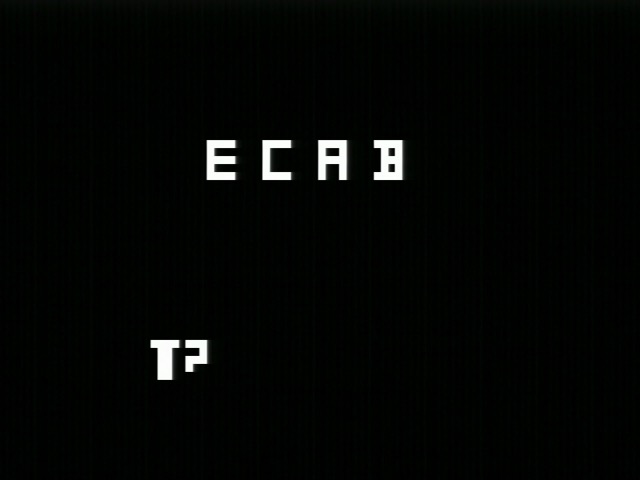
So I am very glad to have a functioning RCA Studio II. I actually had some finickiness getting this multicart to work, as I was getting the dreaded long beeps on bootup. However, the manual suggested cleaning the cartridge port with some contact cleaner, and that solved everything right up.
It also recommends just leaving the system on when you switch rotary positions. This does produce glitches, but you need to manually hit the “Clear” button to reset the console on bootup anyway. I liked this glitch because it reminded me of the famous Adventure easter egg.
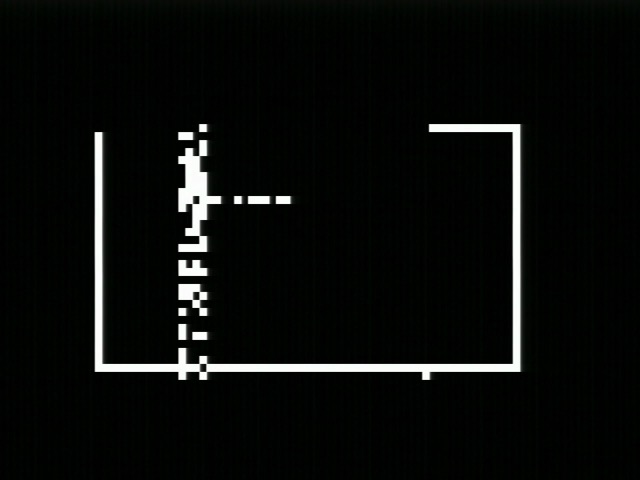
Pinball and the tyranny of BIOSes
Of course the multicart has games. One of those games is Pinball, a Studio II title that was released, but I’ve never played before. I don’t actually see it on Wikipedia’s list of released cartridges– more on that in a second.
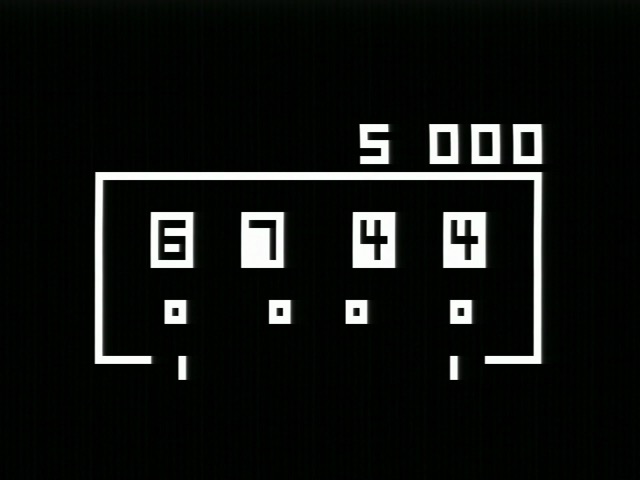
So that’s pretty neat; the giant paddles remind me of the contemporary Atari Video Pinball standalone console. Now, RCA’s Pinball has come up on this blog before, and quite recently too– I used it as an example of a color game for the European MPT-02 console in an aside on the Toshiba COM-100 post, linking to this video. (Not mine)
As it turns out, the multicart also features the full MPT-02 library. So let’s take a look at the MPT-02 version of Pinball. Let’s boot that up to compare.
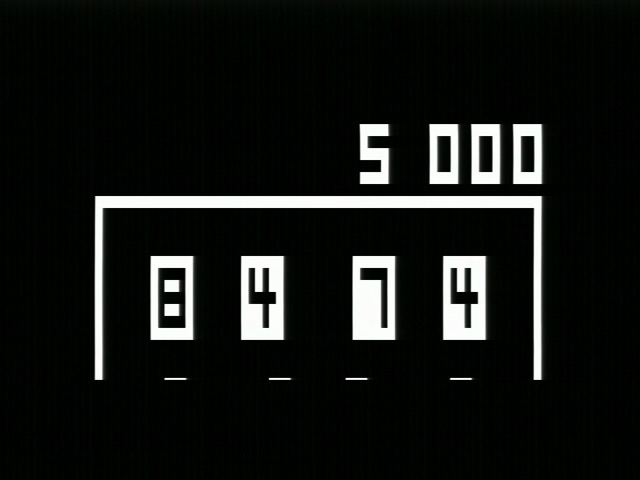
What’s going on here? Well, the answer will involve contradicting what I said in a prior post. Specifically, all the way back in my first Studio II post, I said:
By the way, it’s worth noting that the Studio II doesn’t actually boot to the cartridge, so I can’t use that to test whether the system works. It always boots to the internal ROM first.
Well, the game I was talking about then, TV Arcade III: Tennis/Squash did indeed not boot to the cartridge, but to the internal ROM. But it is possible for a cartridge to overwrite the internal ROM space, and this multicart does just that. When you run an MPT-02 game, by default it uses the MPT-02 system ROM. The European MPT-02 system ROM.
Quick overview of the NTSC RCA video system here. The Pixie graphics chip has a resolution of 128 display lines, each 64 pixels wide. To save RAM, the Studio II’s internal ROM messes with the timing of the Pixie chip, repeating each line four times. This creates the final resolution of 64x32. The MPT-02 has the same resolution, but its timing must match the European television system, where each 50Hz field has more scanlines. (The great 50Hz tradeoff: higher vertical resolution, lower time resolution) The console has to repeat the same line even more times to get decent coverage of the screen.

There’s a switch on the multicart to override this and have the console use its own system ROM, and in that case, Pinball looks fine, identical to the supposed NTSC version; in fact, I suspect the multicart is just including the same game across multiple slots so that both Europeans and Americans can access Studio II Pinball with whatever resolution they prefer.
Chip-8
Chip-8 is an interpreted programming language created by Joseph Weisbecker to run on the CDP1802 and provide a graphical environment with a resolution of 64x32 using the Pixie graphics chip. The RCA Studio II runs a CDP1802 processor but provides an interpreted “pseudo-assembly” created by Joseph Weisbecker that can provide a graphical environment with a resolution of 64x32 using the Pixie graphics chip. However, the two are not the same; but with this multicart, we can overwrite the ROM to make it compatible.
Here’s Chip-8 Tetris (or, at least, a game very similar to Tetris in gameplay, but not endorsed by the Tetris Company– like most Studio II games it has no title screen) running on my RCA Studio II.
You can notice a few things. For one thing, it’s not that fast. Despite that, I’m making boneheaded moves; this is because I wasn’t used to the control scheme, which places the rotate button to the left of the move left and move right buttons. But what’s more interesting is how the game is checking for lines. Pure Chip-8 does not allow the programmer to read the screen memory directly– as a result, the developer is using a 1x1 sprite and checking for collisions at each point that might have changed. It’s not fast, but it’s very clever.
Homebrew
The CDP1802 is all about the enthusiasts, and that continues here. There’s an excellent set of homebrew on board, like this one, based on the classic arcade title Gunfight.
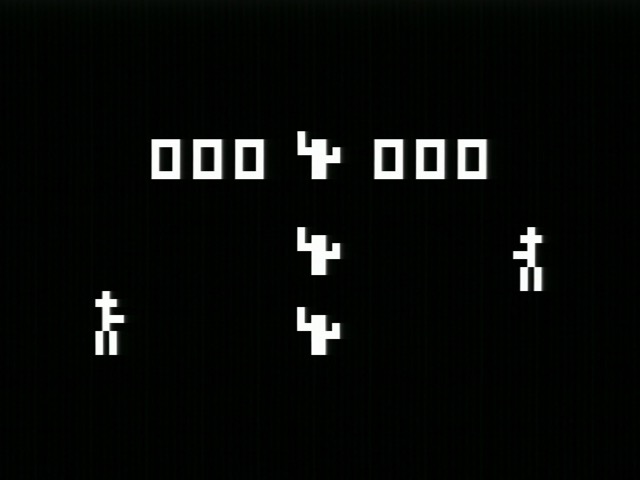
Or this take on Pac-Man.
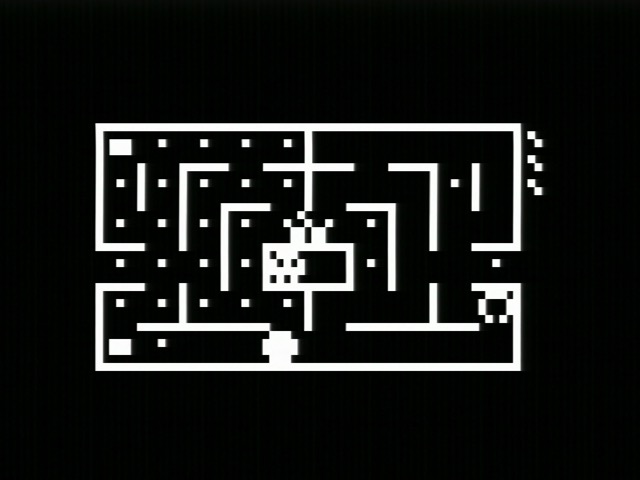
Or this take on Space Invaders. Notice that unlike Epoch’s TV Vader, there are a lot more invaders. The RCA Studio II hardware wasn’t that uncompetitive.
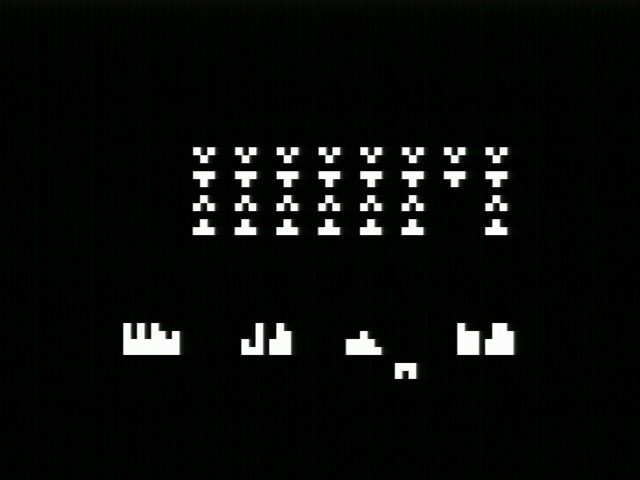
But one of the most interesting titles on here is Azya52’s Race. Just take a look and you’ll see it stands out.
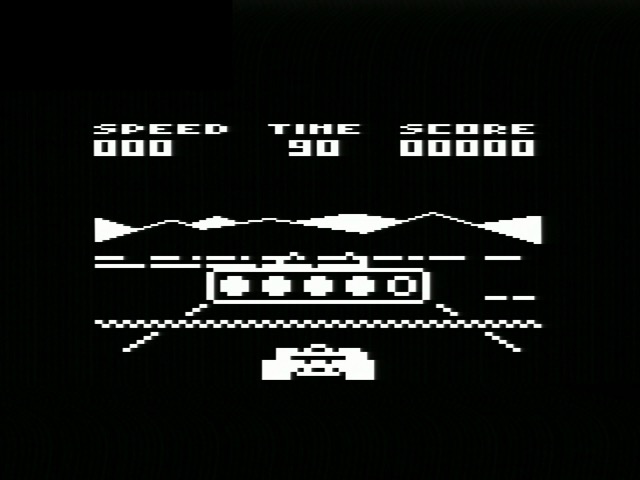
Azya’s game completely replaces the kernel of the RCA Studio II. Back in my prior post, I theorized one could add additional RAM and access the higher-resolution capabilities of the Pixie. However, there are some technical obstacles to that; but Azya gets that higher resolution without any extra RAM, using the ROM for fixed graphics. Notice that this was a little unstable on my capture device and the OSSC (that video jump was a brief sync loss), but it worked great on a CRT.
This really pushes the limit of the RCA Studio II, and is pretty much implemented in pure CDP1802 assembly rather than the interpreted pseudo-assembly. This is probably the kind of thing we’d have seen if RCA’s console had had as long of a lifetime as Atari’s VCS did. Super impressive stuff.
Making a shell
So one last thing in the package was a cartridge sticker; the expectation is to break the rivets and replace the internal PCB of a standard shell. But I didn’t want to do that; thankfully, on Thingiverse there’s an alternative shell.
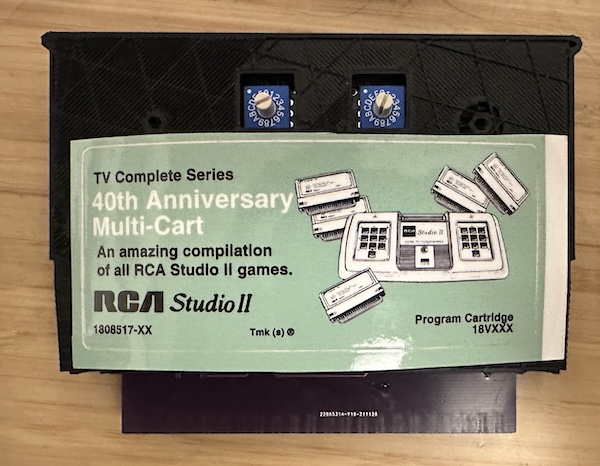
Mine didn’t turn out perfect; I need to try re-printing the top, it looks like something went wrong there (despite using a prodigious amount of infill) preventing a thin surface. But still, enough to at least get the idea! Thanks again to Philip Marien for making this post possible.

A series on: The RCA Studio II
The radio company tries its hand at game consoles. Late to the market and with only monochrome graphics, how can I make this sound interesting?
- A System For The Sixties: The RCA Studio II — Historical background on the CDP1802 chipset that powers the console, and a failed attempt to get one running.
- The RCA Studio II in Living Monochrome — An actual working machine, and a look at the built-in games and a cartridge too. (Possibly a Pong console post)
- A System For The Sixties-and-a-Half: The Toshiba Visicom COM-100 — From Japan with color: Toshiba takes a spin at beefing up the Studio II for the Japanese market
- The RCA Studio II Lives On: A Package from Belgium — A gift from a modern Studio II enthusiast shows off what the system is really capable of.
